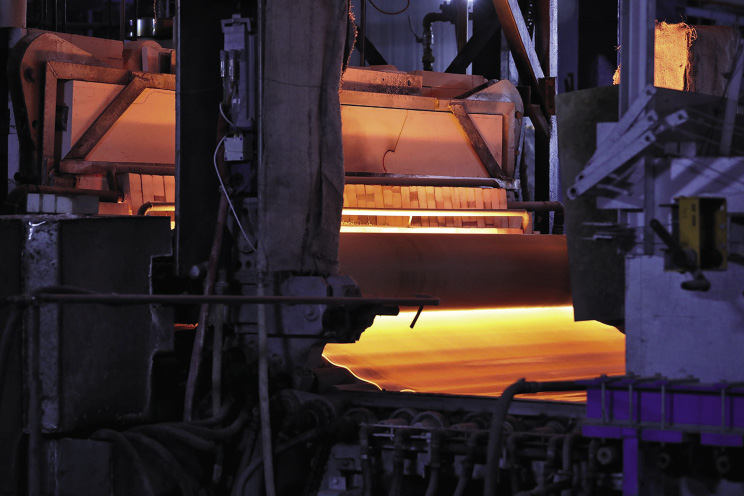From pv magazine 03/2022
The Indian solar manufacturing sector, currently limited to mostly module production, is seeing increased activity on the cell front. New players are joining the existing handful to announce big plans.
Bridge To India Managing Director Vinay Rustagi expects to see a massive cell manufacturing expansion of up to 35GW in the next two to three years, compared to 3.5GW of operational capacity at present. The government’s 25% basic customs duty on PV cell imports, starting in April, and the expansion of the production-linked incentive (PLI) scheme’s subsidy budget, are providing the required push.
The opportunity before manufacturers lies not just in scaling up capacity, but in upgrading the technology as well. “Most of the [existing cell capacity in India] is old multicrystalline technology with only Adani Solar, Tata Power Solar, and Premier Energies having some material mono-PERC capacity,” says Rustagi.
Place for PERC
Manufacturers such as Adani Solar and Premier Energies are forthcoming with details of their technology plans, while others have chosen to keep quiet for now, as their plans are at too early a stage for them to comment. Understandably, manufacturers are awaiting the award of a contract under the government’s PLI scheme. This incentivizes the best technology, the extent of localization, and the level of integration. Many want to keep their plans confidential, anticipating strong competition from their domestic counterparts, as well as international players.
“Strong competition already exists from established Chinese manufacturers in the international market,” says Shreyas Garg, program associate at the CEEW Centre for Energy Finance.
“If [the cell and module manufacturing] does come up as predicted, it will lead to a competitive domestic market as well. Since most of the new capacity will be built under the PLI scheme, module efficiency must be at least 19.5%. This makes mono-PERC the default choice [for Indian manufacturers].”
The shift to n-type technology that’s beginning with some other manufacturers in 2022 will be limited by the high cost of investment involved.
“While the PLI scheme will provide some income security, manufacturers are unlikely to go for n-type cell manufacturing (TOPCon or HJT) as both these technologies are currently more expensive than mono-PERC,” explains Garg.
Rustagi also says that p-type mono should be the preferred technology for most companies, because of the lower capex and cost of production. However, he expects Reliance Industries – which has already invested heavily in some even earlier-stage PV technologies – and some other companies to start making initial investments in TOPCon or other n-type solar technologies.
Leading the charge
Adani Solar, an integrated player from cells and module to PV power plant operation, has been quick to chart a strategy in response to the market shift from p-type products to n-type. The company is planning an additional 4GW of cell capacity with upcoming n-type-based technologies, either TOPCon or heterojunction, on top of its 2GW of mono PERC expansion plans. The company also expects to be able to upgrade these facilities to produce multijunction/tandem cells in the coming years.
Currently, Adani Solar has a total cell capacity of 1.5GW, comprising three different cell technologies: multicrystalline, mono PERC, and n-PERT (n-type bifacial). The first expansion for another 2GW with mono PERC bifacial technology is set to start up within three to four months – taking its overall cell and module capacity to 3.5GWp by the end of 2022.
In addition to cell and module expansion, Adani Solar is aggressively planning to invest in backward integration of ingot and wafer production, as well as polysilicon and associated raw materials ecosystem development.
The company is sourcing equipment from major suppliers in the United States, Europe and other overseas markets, as it aims to become a leader in terms of new technology development and advanced products with superior field performance. Tools will be integrated to ensure the implementation of advanced process knowhow with the flexibility to address future technology developments.
For the planned expansions, Adani Solar is adopting the strategy of investing in new technology on a pilot-scale in advance, to understand the process limitations and challenges before moving into large-scale capacity expansion. The investment in product/technology selection is guided by the levelized cost of electricity (LCOE) benefits instead of cost/Wp.
Premier Energies’ upcoming 1GW mono-PERC line will also have the expansion/upgrade option for TOPCon. With this, it aims to cater to demand for high-efficiency, large-format modules, both in India and the United States. At present, Premier Energies has an annual mono PERC cell capacity of 750MW, compatible to process up to 210 mm wafers.
Chiranjeev Saluja, managing director at Premier Energies, told pv magazine that construction has already started for the new 1GW of capacity, and he expects the lines to be commissioned in this calendar year. This line will be producing 210 mm mono PERC cells, and will have an expansion/upgrade option to TOPCon. The company is sourcing equipment for its cell lines from both German company Centrotherm and China’s SC Schenzen.
With several other manufacturers keeping their cell technology and equipment plans under wraps for now, one can expect some more announcements for TOPCon in particular, as this appears to be the way much of the industry is moving, and manufacturers that don’t adapt risk being left behind.
Garg sums it up best by saying that “in the long run, investing in technology development is essential. India needs to shift its approach to R&D and drastically enhance the role of the industry if it is to compete in the global market without protections such as import duties and production incentives.”
Driving domestic demand
As India looks to ramp up its domestic solar manufacturing industry, the government has issued a series of policies to support manufacturers establishing PV production lines in India, and to drive demand for their products.
Indian credit-rating agency ICRA expects these policies to work out, and for India’s solar manufacturers to see strong demand over the coming years. But it asks whether the expected 40GW of cell and module manufacturing expected to result from the production-linked incentive scheme will be enough to meet all of India’s demand. It also warns that Indian producers must keep a close eye on import prices as they ramp up production this year.
“The policy focus by the government of India in the renewable energy (RE) sector remains strong, as also evident from the policy target of 500GW of non-fossil fuel-based capacity by calendar year 2030, as well as policy direction in the energy transition with net-zero emission target by 2070,” said ICRA Senior Vice President Girishkumar Kadam. “In this context, capacity addition in the solar energy segment within RE is expected to remain significant with about 65% to 70% share by FY 2030, given the relatively lower execution challenges in the solar segment.”
While painting a broadly optimistic picture for Indian manufacturing, ICRA further warned that timely commissioning and ramp-up of ongoing capex in the module manufacturing value chain remains critical in the near to medium term, as domestic manufacturers relying on imported cells remain exposed to price fluctuations.
“OEMs based on imported cells remain exposed to volatility in cell/module price levels,” added Vikram V, vice president and sector head for corporate ratings at ICRA. “Based on an imported module price level of $0.27/watt for mono PERC modules and cell price at $0.15/watt, the cost of modules from such domestic OEMs is expected to be lower by 10% to 11% post-April 2022, assuming the applicable BCD on imported cells/modules. However, the extent of discount will reduce if the prices of imported cells and modules reduce from the prevailing level.”
This content is protected by copyright and may not be reused. If you want to cooperate with us and would like to reuse some of our content, please contact: editors@pv-magazine.com.









1 comment
By submitting this form you agree to pv magazine using your data for the purposes of publishing your comment.
Your personal data will only be disclosed or otherwise transmitted to third parties for the purposes of spam filtering or if this is necessary for technical maintenance of the website. Any other transfer to third parties will not take place unless this is justified on the basis of applicable data protection regulations or if pv magazine is legally obliged to do so.
You may revoke this consent at any time with effect for the future, in which case your personal data will be deleted immediately. Otherwise, your data will be deleted if pv magazine has processed your request or the purpose of data storage is fulfilled.
Further information on data privacy can be found in our Data Protection Policy.